Chapter: Microprocessor and Microcontroller
Instruction Set and Execution in 8085
INSTRUCTION SET AND EXECUTION IN 8085
Based on
the design of the ALU and decoding unit,
the microprocessor manufacturer provides instruction set for every
microprocessor. The instruction set consists of both machine code and
mnemonics.
An
instruction is a binary pattern designed inside a microprocessor to perform a
specific function. The entire group of instructions that a microprocessor
supports is called instruction set. Microprocessor instructions can be
classified based on the parameters such functionality, length and operand
addressing.
Classification
based on functionality:
I.
Data transfer operations: This group of
instructions copies data from source to destination. The content of the source
is not altered.
II.
Arithmetic operations: Instructions of this group
perform operations like addition, subtraction, increment & decrement. One
of the data used in arithmetic operation is stored in accumulator and the
result is also stored in accumulator.
III.
Logical operations: Logical operations include AND,
OR, EXOR, NOT. The operations like AND, OR and EXOR uses two operands, one is
stored in accumulator and other can be any register or memory location. The
result is stored in accumulator. NOT operation requires single operand, which
is stored in
accumulator.
IV. Branching
operations: Instructions in this group can be used to transfer program sequence
from one memory location to another either conditionally or unconditionally.
V.
Machine control operations: Instruction in this
group control execution of other instructions and control operations like
interrupt, halt etc.
Classification
based on length:
I.
One-byte instructions: Instruction having one byte
in machine code. Examples are depicted in Table 2.
I.
Two-byte instructions: Instruction having two byte
in machine code. Examples are depicted in Table 3
II.
Three-byte instructions: Instruction having three
byte in machine code. Examples are depicted in Table 4.
Table 2
Examples of one byte instructions

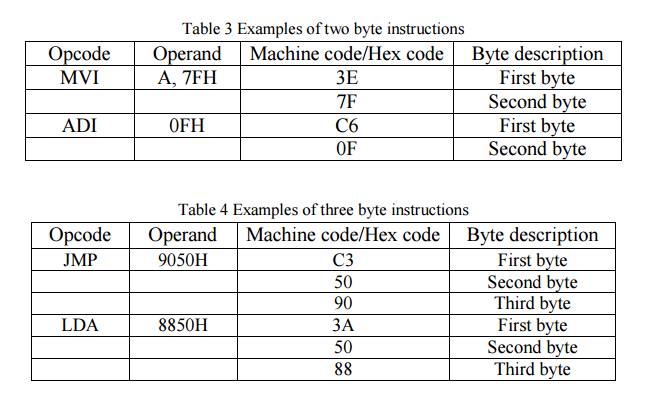
Addressing
Modes in Instructions:
The
process of specifying the data to be operated on by the instruction is called
addressing. The various formats for specifying operands are called addressing
modes. The 8085 has the following five types of addressing:
I.
Immediate addressing
II. Memory direct addressing III. Register direct
addressing IV. Indirect addressing
V. Implicit
addressing
Immediate
Addressing:
In this
mode, the operand given in the instruction - a byte or word – transfers to the
destination register or memory location.
Ex: MVI
A, 9AH
·
The operand is a part of the instruction.
·
The operand is stored in the register mentioned in
the instruction.
Memory
Direct Addressing:
Memory
direct addressing moves a byte or word between a memory location and register.
The memory location address is given in the instruction.
Ex: LDA
850FH
This
instruction is used to load the content of memory address 850FH in the
accumulator.
Register
Direct Addressing:
Register
direct addressing transfer a copy of a byte or word from source register to
destination register.
Ex: MOV
B, C
It copies
the content of register C to register B.
Indirect
Addressing:
Indirect
addressing transfers a byte or word between a register and a memory location.
Ex: MOV
A, M
Here the data
is in the memory location pointed to by the contents of HL pair. The data is
moved to the accumulator.
Implicit
Addressing
In this
addressing mode the data itself specifies the data to be operated upon.
Ex: CMA
The
instruction complements the content of the accumulator. No specific data or
operand is mentioned in the instruction.
INSTRUCTION SET OF 8085
Data
Transfer Instructions:
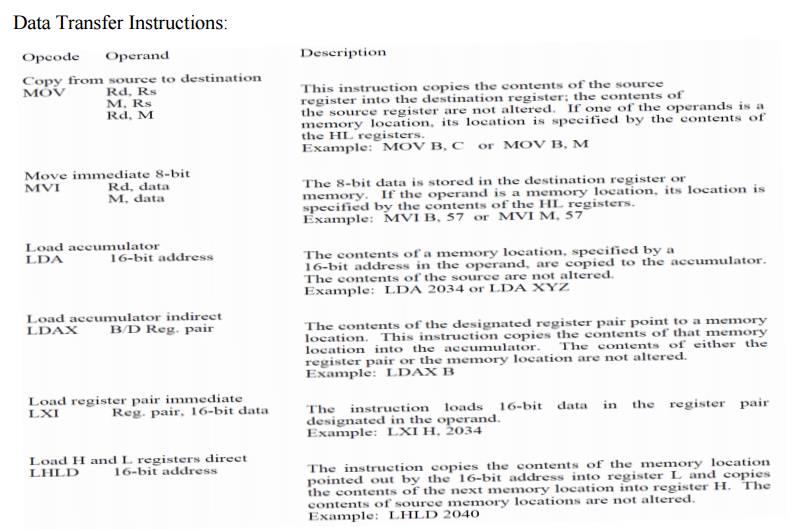
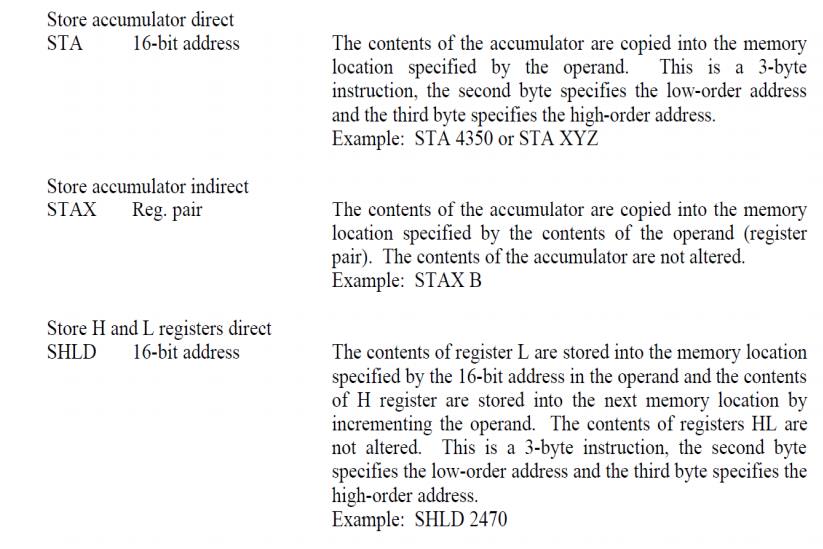
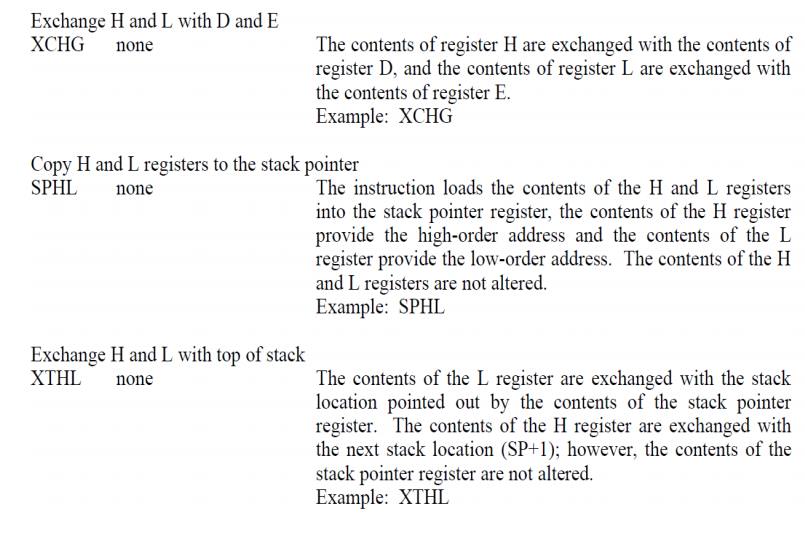
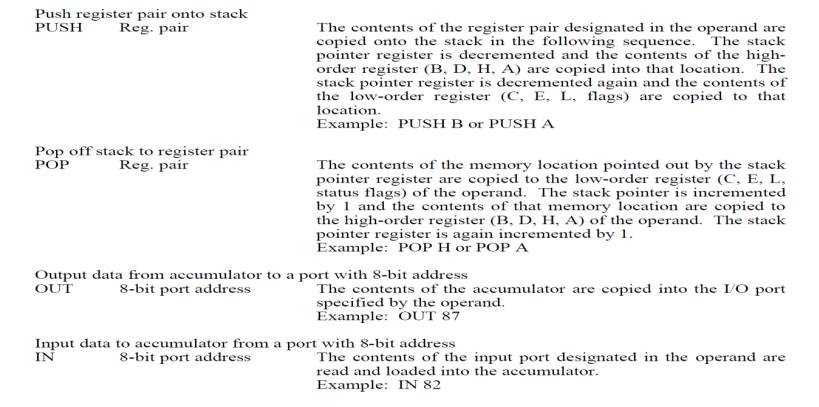
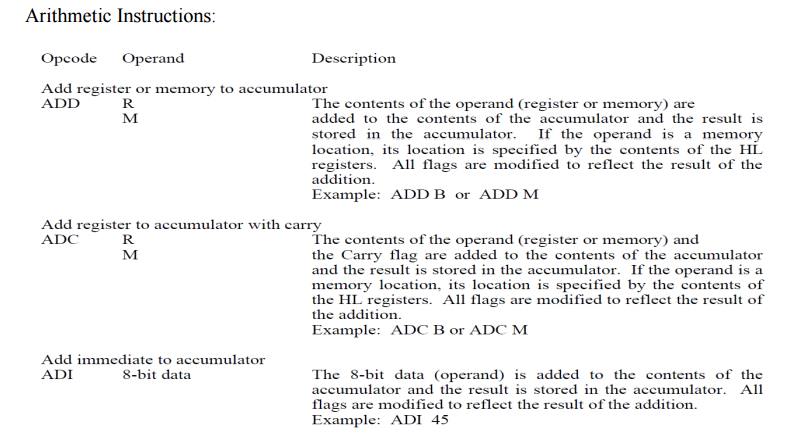
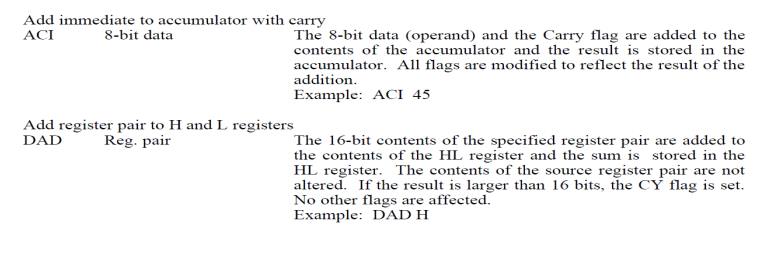
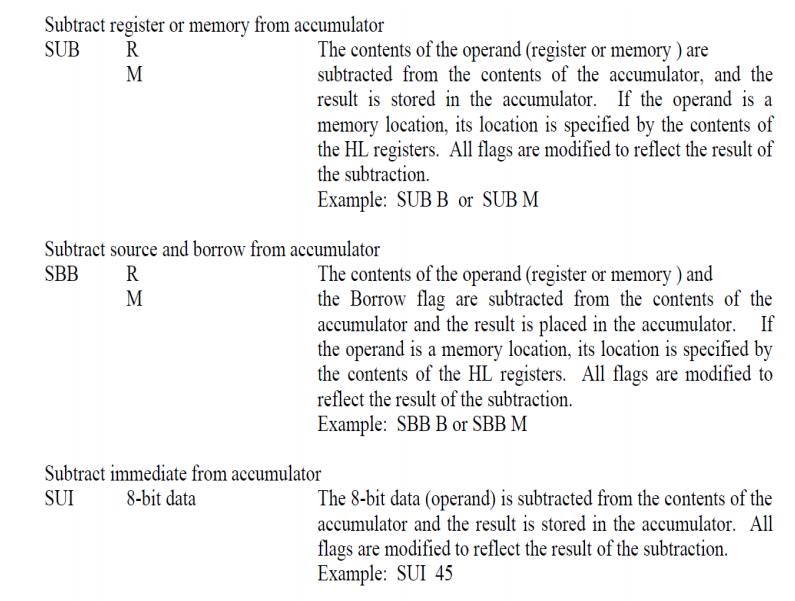
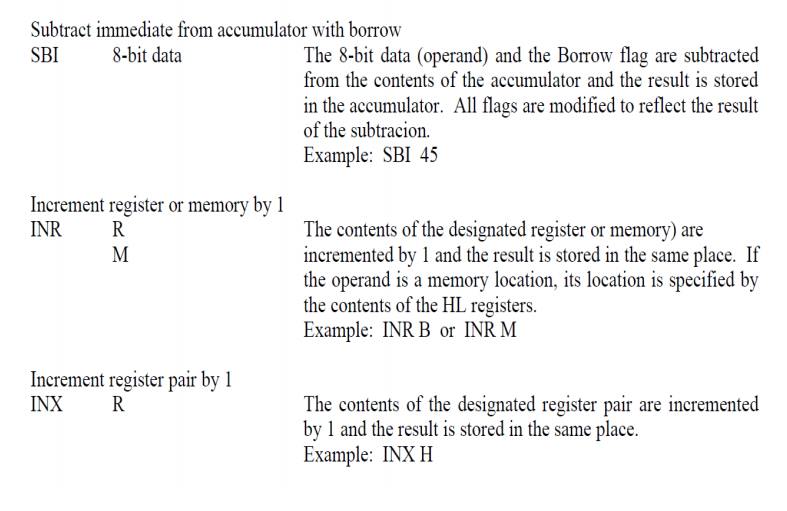
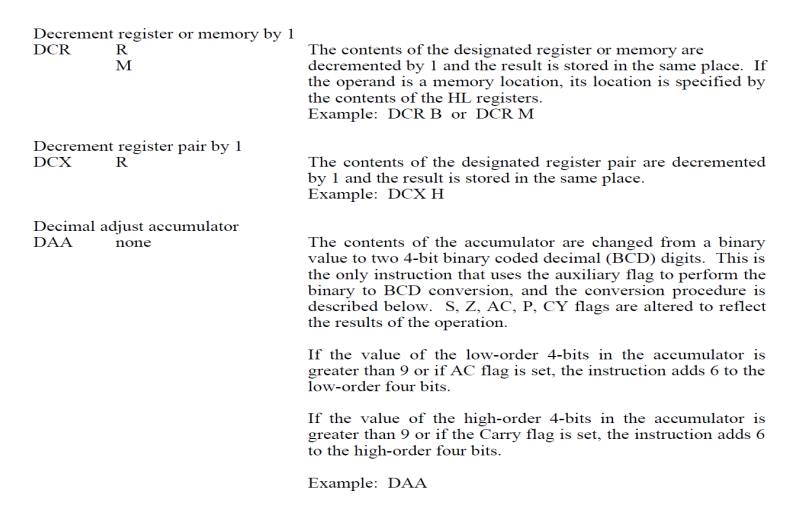
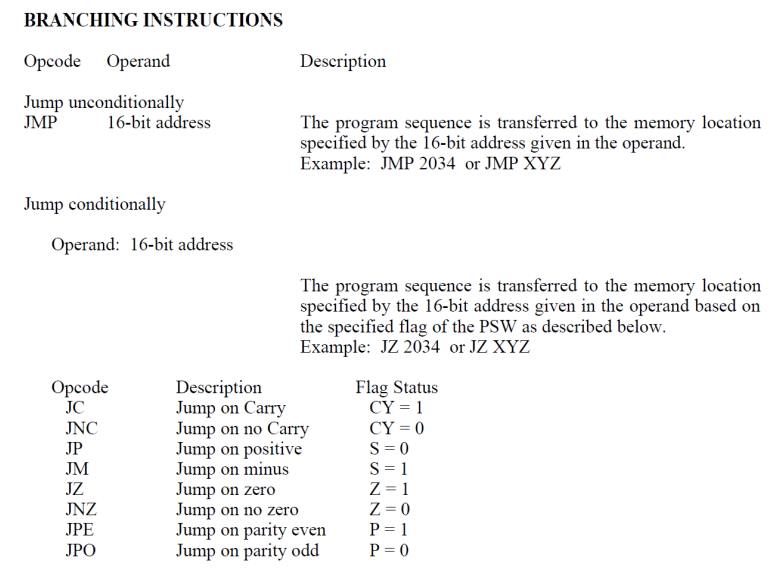
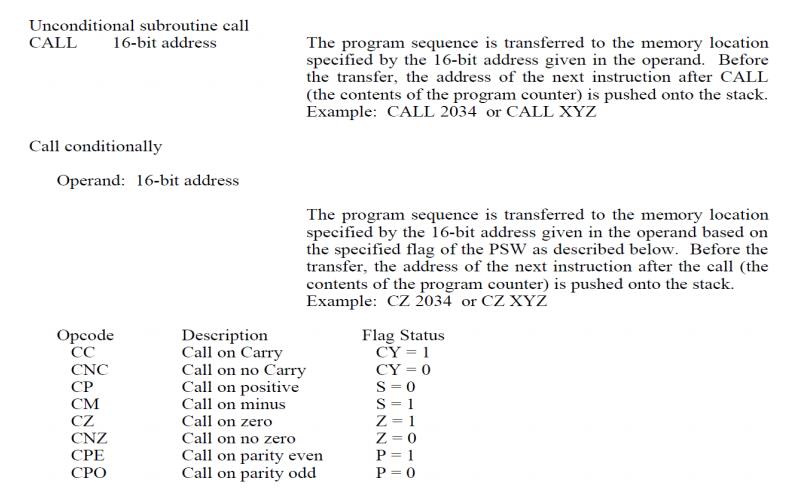
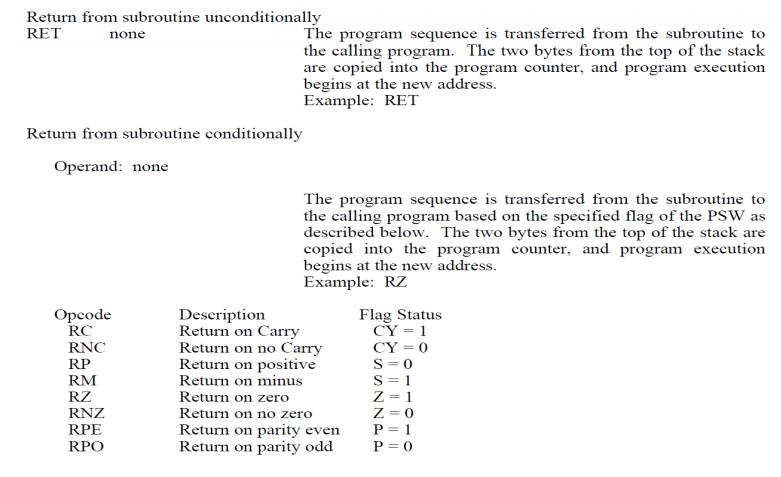
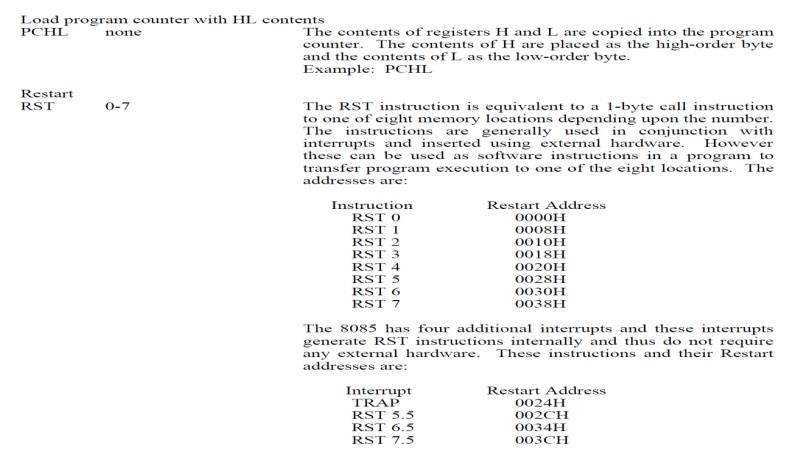
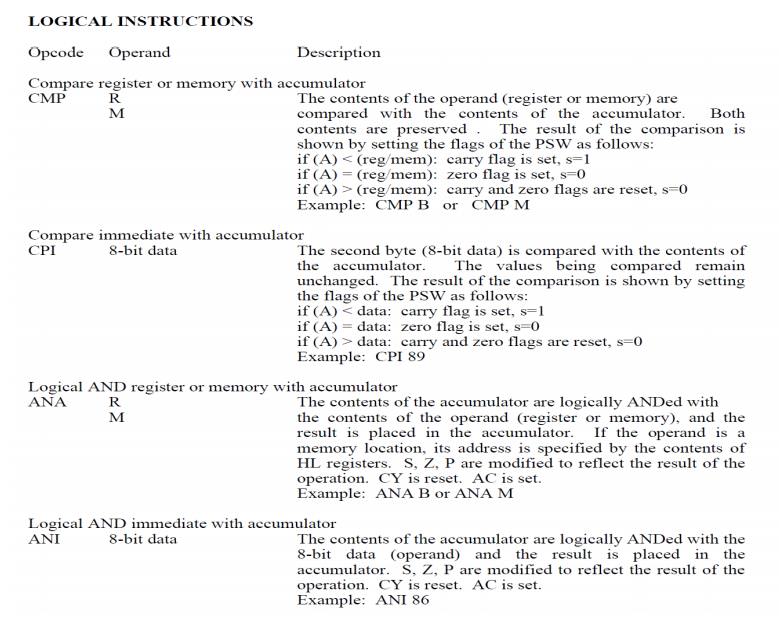
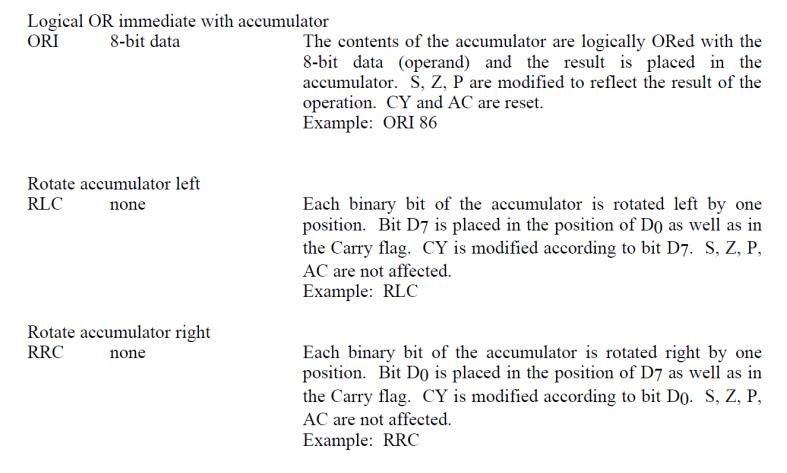
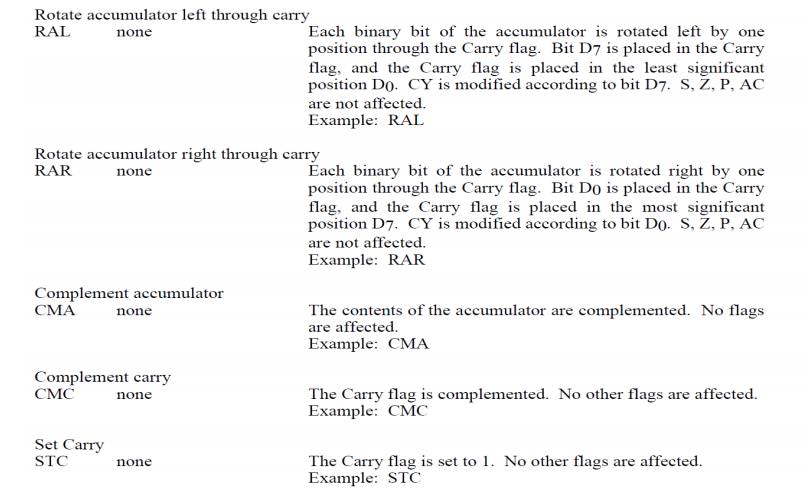
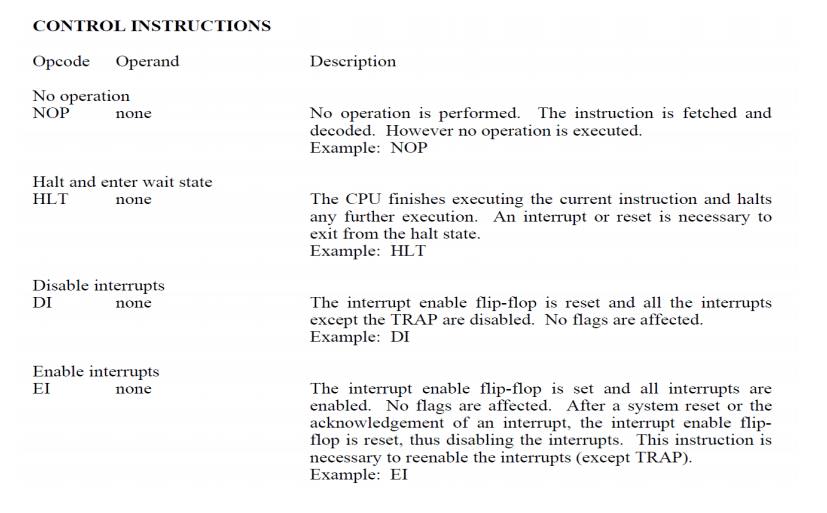
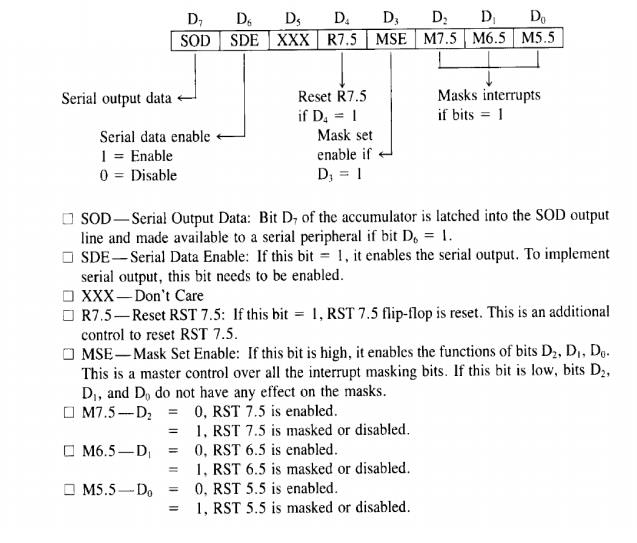
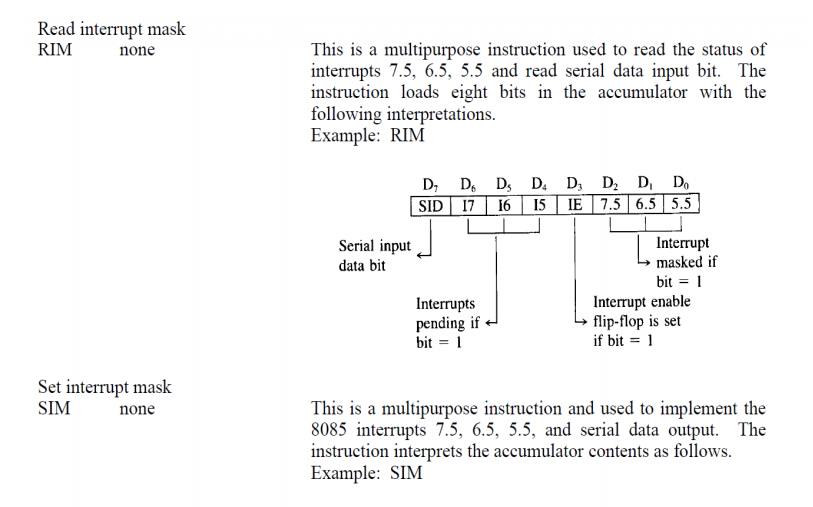
Related Topics